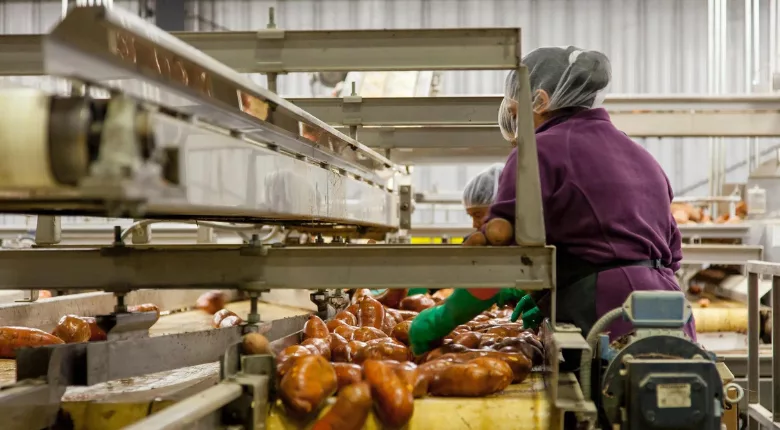How to Manage Ten Common Risks in the Food and Beverage Industry

Image credit: Mark Stebnicki via Pexels
The food and beverage industry has long been one of the largest and most crucial sectors of the global economy. In the U.S. alone, the U.S. Department of Agriculture reports that agriculture, food, and related industries contribute 5.4 percent to the gross domestic product and employ 10.4 percent of the workforce.1 Additionally, Americans' expenditures on food rose to 12.8 percent of their household budget last year, trailing only housing and transportation.
For those leading the industry, there is tremendous opportunity for growth—but with growth comes risks that can negatively impact operations, profitability, and reputation. Many of these risks are interrelated, but management would be wise to identify and mitigate these risks before they prove costly.
Below are outlined ten common risks of the food and beverage industry and effective strategies and proactive measures to mitigate them.
Risk 1: Food Safety
In an era when consumers are increasingly more aware about what they are putting into their bodies, any instance of contamination or foodborne illness could spell doom for a company. Contamination could take the form of pathogenic bacteria, viruses, allergens, or foreign substances, and often results from inadequate storage conditions, improper temperature control, or insufficient hygiene practices. To avoid these significant health risks to consumers, management should focus on rigorous food safety management and quality control standards throughout the entire supply chain, including establishing strong relationships with reputable and reliable suppliers.
Risk 2: Product Quality and Recall
While similar to food safety risks, this category looks more at issues related to qualities such as taste, texture, appearance, and consistency that lead to dissatisfied customers. Unhappy customers can damage a brand's reputation and create potential liabilities. Ensuring that quality control standards and testing are in place will help manufacturers avoid formulation errors, improper processing, or even packaging defects that contribute to product quality and recall risks.
Looking for quick answers on food safety topics?
Try Ask FSM, our new smart AI search tool.
Ask FSM →
Risk 3: Supply Chain
The COVID-19 pandemic gave every manufacturer a crash course in the importance of a reliable supply chain for ingredients and packaging materials. Disruptions in these supply chains led to increased costs and decreased production capacity. To mitigate supply chain risks, business leaders should consider diversifying their supplier base and developing contingency plans to minimize the impact of a disruption. Alternatively, consider establishing stockpiles of key ingredients or implementing flexible production processes that can quickly adapt as circumstances change.
Risk 4: Consumer
Consumer preferences and trends change so often that it can be tough for brands to remain competitive and retain customer loyalty. Adapting quickly to these changes is imperative to maintain market share and sales growth. To avoid losing customers, consider investing in market research and consumer insights to guide decision-making in product development, branding, and marketing strategies.
Risk 5: Competition
Given the statistics shared above, chances are that food and beverage manufacturers will find themselves in a crowded playing field. To remain competitive, companies must invest in innovation and continuous improvement of both product and processes. This may mean developing new, niche markets or streamlining operations to maximize efficiency.
Risk 6: Regulatory Compliance
For a good reason (see Risk 1), the food and beverage industry has some of the most stringent regulations to ensure food safety, quality, and proper labeling. Failure to comply could result in fines, sanctions, or even legal action, jeopardizing a company's future. In addition to the quality control standards discussed previously, an effective compliance program can help mitigate the risk of non-compliance, while dedicated resources that are tasked with monitoring for regulatory changes can help avoid future problems.
Risk 7: Reputation
In today's 24/7 news cycle, any incident can easily become a crisis with the speed of social media and online reviews. Even the slightest loss of trust in a brand can lead to decreased sales and may prove to be incredibly difficult to overcome. In addition to managing the risks listed in this article to help avoid these situations, brands should monitor online activity to ensure that even small complaints are addressed quickly and effectively.
Risk 8: Operational
The workforce is changing quickly, and inadequate staff training poses a significant risk to manufacturers. Additionally, equipment failures or inefficient inventory management can lead to production delays, increased costs, and financial pressure. Establishing a culture that empowers employees to identify, assess, and respond to operational risks will help the company respond in a timely manner and avoid lengthy delays for extra training or equipment repair.
Risk 9: Environmental
In addition to being more aware of what they are eating and drinking, consumers are also more aware of how companies are interacting with the environment. Failure to implement green practices not only negatively impacts a brand's image, but also increase scrutiny from consumers, competitors, and regulatory agencies. Now is the time for managers to ensure the company's long-term viability by addressing sustainable practices including waste management, carbon emissions, and energy consumption.
Risk 10: Cybersecurity
With today's increased digitalization and connectivity, every company is at risk for cybersecurity attacks. In addition to unauthorized access to financial data or customer information, food and beverage companies risk exposing proprietary information from recipes to marketing plans. They also risk attacks to facility operations, which could negatively impact food safety and/or quality. Managers should regularly assess vulnerabilities related to technology and systems and implement practices that restrict access, offer antivirus protection, and back up data regularly.
In conclusion, it is essential that food and beverage companies identify, assess, and manage risks to protect their business and the consumers that support it. By taking a proactive approach, these risks can be navigated with ease and allow brands to further thrive in the growing food and beverage industry.
- U.S. Department of Agriculture. Economic Research Service. "Ag and Food Sectors and the Economy." Last updated November 3, 2023. https://www.ers.usda.gov/data-products/ag-and-food-statistics-charting-the-essentials/ag-and-food-sectors-and-the-economy/.








